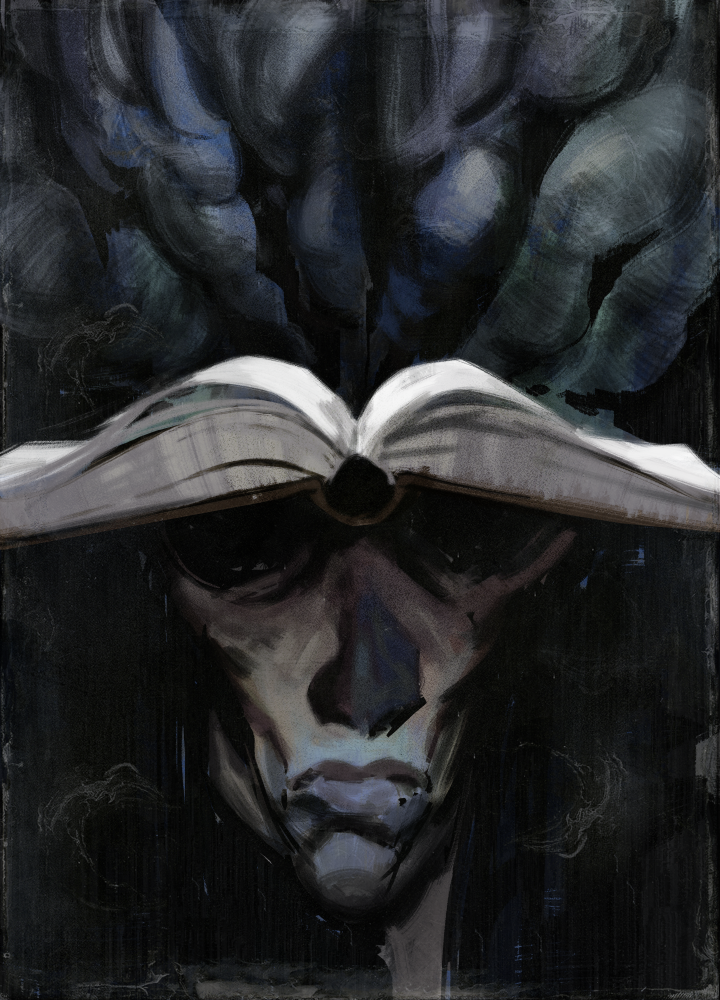ChatGPT cannot imagine freedom or alternatives; it can only present you with plagiarized mash-ups of the data it’s been trained on. So, if generative AI tools begin to form the foundation of creative works and even more of the other writing and visualizing we do, it will further narrow the possibilities on offer to us. Just as previous waves of digital tech were used to deskill workers and defang smaller competitors, the adoption of even more AI tools has the side effect of further disempowering workers and giving management even further control over our cultural stories.
As Le Guin continued her speech, she touched on this very point. “The profit motive is often in conflict with the aims of art,” she explained. “We live in capitalism, its power seems inescapable — but then, so did the divine right of kings. Any human power can be resisted and changed by human beings. Resistance and change often begin in art. Very often in our art, the art of words.” That’s exactly why billionaires in the tech industry and beyond are so interested in further curtailing how our words can be used to help fuel that resistance, which would inevitably place them in the line of fire.
[…]
The stories and artworks that resonate with us are inspired by the life experiences of artists who made them. A computer can never capture a similar essence. Le Guin asserted that to face the challenging times ahead, we’ll need “writers who can remember freedom — poets, visionaries — realists of a larger reality.” Generative AI seems part of a wider plan by the most powerful people in the world to head that off, and to trap us in a world hurtling toward oblivion as long as they can hold onto their influence for a little longer.
As Le Guin said, creating art and producing commodities are two distinct acts. For companies, generative AI is a great way to produce even more cheap commodities to keep the cycle of capitalism going. It’s great for them, but horrible for us. It’s our responsibility to challenge the technology and the business model behind it, and to ensure we can still imagine a better tomorrow.



Sorry if this is a little off topic, but it’s something I’ve been thinking a lot about lately. I think the way I make my photobashes is closer to how people think AI works than the AI actually is. The nature of a photobash is that everything has been cut from photographs, I make my art by cutting up other people’s art (if you consider free textures, stock photos, and home depot, lowes, and amazon advertisements to be art, though I often do grab bits and pieces from farther afield than that) and I’ve kind of been expecting some backlash for awhile now, especially over on the solarpunk subreddit where they really seem to hate AI for the ‘plagiarism machine’ reasons. I think some folks who make collages really enjoy the bits of context the different elements bring with them, but I’m kind of the opposite. I like the way this process strips the bits and pieces of their original context and remixes them into something new. I feel like this is how I’ve always made things, even writing. Nothing is spun into existence out of thin air. I pull concepts, plot beats, character traits and more out of stuff I love, or often stuff that I think had potential but missed the mark, and jam it together into something new.
Maybe because of that, or because I never had it make the whole scene, AI never felt like a huge departure from my processes, just another tool in the toolbox. If it’s borrowing styles, rules of design, or color pallets, at least it’s not cutting the source up directly. I’ve used a friend’s midjournybot a few times in the photobashes, to generate bits and pieces I couldn’t find or wouldn’t use, mostly for in-world artwork. I think it’s pretty amazing, the things it comes up with, and though I wouldn’t use it to generate a whole scene because it wouldn’t get the details right, it’s really useful when I want to include a type of art in a scene but don’t have specific design in mind. I’ve had it make wood panels carved with leaves and stained glass windows for the kitchen, and a spraypaint mural and a mandala pattern for the parking garage scene. I take what it makes, cut it up, transform it as necessary, and layer it into the scene. I think I mostly use it for in-world art because, like I said, I like the way this process cuts bits out of one picture and gives them a new job in a new picture. But I can’t do that with artwork – to include a carving or a stained glass window would be to include the whole thing, rather than just a piece of it, and dropping the whole thing into a new context feels a lot more like actual theft, or like it could change the original in some way. I don’t know.
I guess my point is that imagination has always felt like this to me? And that people will keep imagining better futures, no matter what tools they coexist with? Heck I’m making my depictions of the future entirely out of photographs of things that exist now. I don’t doubt that there are billionaires and tech types who’d love to remove the artists from the production of art, in order to gain full control over the messages it conveys. But there’s already plenty of lowest-common-denominator mass-consumption art being cranked out by their companies. And they’ll use their money to produce dross or propaganda whether there are other humans in the loop or not. Like a tattoo artist told me once, ‘some days you make art, some days you make rent.’
(I don’t honestly know if this will reduce the motivation for people to learn to draw in order to get the scenes in their heads out where people can see them, I’ve been using image manipulation tools since I was a kid, but I still started teaching myself to draw in college.)
I don’t love when the arguments against AI still treat art like a product, though I acknowledge that in the world we live in, everything is a product. It just feels like another flavor of the kind of capitalist thinking that treats artists as replaceable parts. At the same time, I understand that people need money to survive and to keep learning and improving so they can put art they love out in the world. I know I’m biased because my career isn’t on the line here. I’ve got the luxury of doing this for free, and releasing it for free because I’m not dependent it for an income. I can make the solarpunk photobashes CC-BY because there’s no opportunity cost there, and it might help them to spread around and influence the overall messaging of solarpunk art and the first impressions people get of the genre. I’ve made sure not to tag it in any way that prevents AI from consuming it, because if I can infect its perception of solarpunk so the things it makes include values like reuse, so much the better.
I mean, without a prompt no AI does anything. There always has to be a human on the other end of every tool, be it a stick or an AI. Difference would be whether there’s a guy standing behind me telling me where to point the stick or AI, or if it’s my own decision, or the decision of the group affected by stick/AI.